
Original Link: https://www.anandtech.com/show/2926
The Apple iPad - Anand's Analysis
by Anand Lal Shimpi on January 27, 2010 5:00 PM EST- Posted in
- Smartphones
- Mobile
About a decade ago Mike Andrawes and I kept hoping someone would come out with a device that would make surfing the web on the couch easier than it was. Mike took the notebook route. He kept buying (or stealing from me) notebooks that were cooler, thinner and lighter while still being a notebook, for the purpose of browsing the web.
I took a more extreme route. I tried ultraportables. I bought a Sony PictureBook. It had a Transmeta Crusoe processor in it, which was horribly slow but gave me the form factor and battery life I craved. I put up with a ridiculously impractical screen just to get something small to browse the web and do work on.
Matthew Witheiler, another AnandTech veteran took a different path. He embraced the tablet PC. Matt became our Tablet PC reviewer on AnandTech as he searched for the perfect device. Unfortunately, he never found it.
None of us did. Today we all went back to the tried and true device: the notebook. The iPhone came along and gave us a revolution in the smartphone space. Ultimately it and the devices that followed just complemented our notebooks - sometimes with a new level of frustration as we were now at the mercy of wireless carriers and ridiculously slow SoCs.
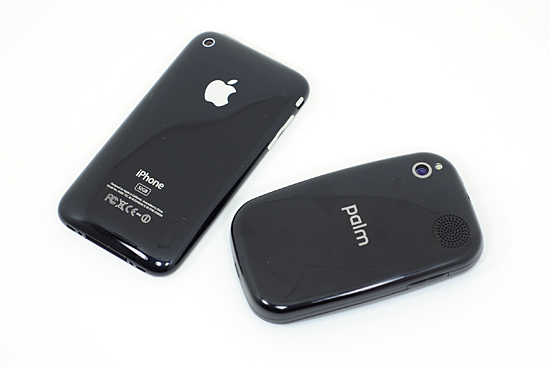
The smartphone revolution gave us some great devices
History likes to repeat itself, and that’s what we’ve seen happen over the past two years. The introduction of the netbook brought the journey full circle. People wanted a cheap, light, portable web surfing and light work device - the netbook did just that.
The keyboard and screen issues have been mostly solved. Performance still sucks and part of that is due to the fact that there are no good netbook OSes that are optimized for the level of performance a 1.6GHz Atom can deliver. Most OEMs ship some variant of Windows on these devices, and with less than 2GB of memory and a single-core in-order CPU, that’s just too much to be fast.
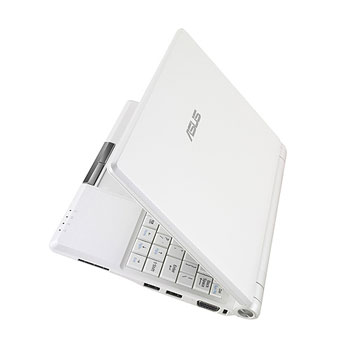
Back to ultraportables again
There’s also the issue of storage. Netbooks desperately need solid state storage, but a single 2.5” SSD is often over half the price of a netbook itself. Pair up a slow CPU with not enough memory and a really slow hard drive and it’s not a good combination.
Microsoft, Intel and Apple have all taught me one very important lesson over the past 13 years: if you’re going after a new usage model, you need new technology to tackle it. For Microsoft and Apple that meant a new UI with Media Center and the iPhone. For Intel it meant a brand new microarchitecture optimized for power efficiency. First with Banias (Pentium M/Centrino) and then with Atom.
Netbooks, and to a greater extent tablets, eReaders and smartbooks, are going after new usage models. These aren’t notebook replacements, they are a new category of device designed for a different usage model. The one thing they’ve all been missing is the perfect combination of hardware and software to deliver the whole package.
The one thing Apple prides itself on is doing just that. As one of very few one-stop hardware/software makers, it has the ability to tightly couple UI with physical design. We saw it manifest in its greatest way with the iPhone, and now Apple (or perhaps the media covering Apple) is attempting to recreate the magic with the iPad.

The final frontier?
The device doesn’t ship for another 60 days, but there’s a lot to talk about based on today’s introduction alone.
The Basics
I’ll say that the iPad isn’t the sort of revolutionary device it was hyped to be. It’s impossible to meet the expectations that were thrust upon the device. Some of that is Apple’s own fault. By being so secretive, the world tends to assume that anything is possible - especially from a company that not too long ago revolutionized the smartphone market. While the iPhone was nicknamed the Jesus Phone, I’m not sure the same label fits the iPad. In part because it is a brand new device for a brand new market segment, not an improved version of an existing product.
In fact, Apple doesn’t have as good of a track record in this department. Far more often we see Apple perfecting a particular device rather than diving head first into a new market segment. That’s not to say it won’t be successful. There’s always the iPod to look back on.
The basics are as follows. The iPad runs the iPhone OS, in this case 3.2. Presumably when the iPhone OS gets updated, so will the iPad OS. The UI is obviously tailored to the larger screen, which measures 9.7” diagonally.

The iPad (WiFi) dimensions. Amazon's Kindle 2 measures in at 8" x 5.3" x 0.36"
The interface is strictly touch. You have four physical buttons: power/sleep switch, mute button, volume up/down and an iPhone-style home button. There’s no correct orientation, the OS uses an accelerometer to figure out how you’re holding it and orients the UI accordingly.

Apple says that nearly 100% of the applications for the iPhone in the App Store will run on the iPad. There are some new applications that Apple is shipping with the device. The entire iWork suite has been ported to the iPad giving you a way to create/view/edit Pages/Word documents, Numbers/Excel spreadsheets and Keynote/Powerpoint presentations.
There’s an email app, a browser, calendar, maps, iPod and all of the basic apps you’d expect. WiFi (802.11n) is supported on all devices while an extra $130 will get you an unlocked 3G version with a microSIM slot. AT&T is the carrier of choice with two dataplan options: $14.99 a month for 250MB of downloads, or unlimited for $29.99. WiFi access at AT&T hotspots is free and there’s no contract required, this is all month to month.
Storage is not expandable and comes in the way of flash. The entry level model comes with 16GB of presumably MLC NAND flash and you can get up to 64GB. The pricing structure is below:
| Apple iPad | 16GB | 32GB | 64GB |
| WiFi | $499 | $599 | $699 |
| 3G | $629 | $729 | $829 |
Availability for the non-3G models is 60 days and 90 days for the 3G enabled devices.
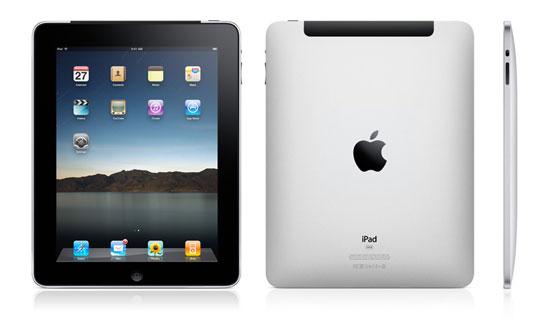
The 3G version of the iPad has a microSIM card slot
From Apple’s demonstrations and the video that’s now live on the site, it appears that the iPad is a great couch surfing device. It looks like a giant iPhone/iPod Touch and appears to be just as snappy. The same can be said for reading and responding to emails. If it works the way Apple portrays it, the iPad appears to be a great device for casually browsing the web, email and watching videos.
Apple is also trying to capitalize on the eBook market by giving the iPad access to Apple’s own eBook store. While I doubt it can pull Kindles away from die hard users, it may open the segment up to more users than Amazon could.

The real question is whether or not the device will function as a productivity device as well.
Will it Work...Literally
Today my issue with the iPhone (and netbooks for that matter) is that they are very limited when it comes to productivity. I don’t have a good solution if I need the performance, usability and capabilities of my notebook, but want something lighter to carry around with me. You could always get a CULV notebook or from Apple something like the MacBook Air, but that’s still a notebook. There is no perfect blend of notebook functionality with smartphone portability. If the iPad can achieve that, at least in the same manner that the iPhone did for smartphones, then I will consider it worth the hype.
Achieving that goal requires a delicate balance of the right UI, the right hardware (including ergonomics) and the right functionality.
The UI looks clean and snappy. Apple’s biggest omission here appears to be multitasking support. One of the most frustrating things about using an iPhone is its inability to do two serious tasks at once. Email + Web browsing, Pandora + anything. You get the point. This is perhaps a temporary issue. The iPad runs iPhone OS 3.2 as of today. The next major release of the iPhone OS, version 4.0, is expected to add multitasking support. This could presumably make its way onto the iPad later this year (or early 2011?).

Yeah that looks super comfortable...
The hardware looks good. It remains to be seen whether or not it’s actually comfortable to hold a 1.5 lbs tablet while you type on it. Although Apple has a couple of accessories that look to address that issue:
 | 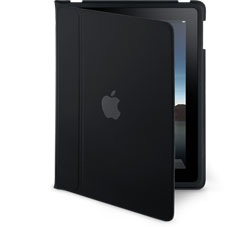 |
 | 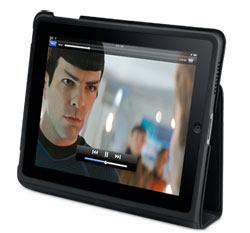 |
The software keyboard looks like it could work well, if it’s combined with the same sort of predictive trickery that the iPhone uses. I’ve been asking for the sort of tablet the Enterprise crew (Star Trek, not the server market) carried around. The iPad’s interface, at least what I’ve seen of it, has the most potential to deliver that sort of experience. The iPad UI could be something that feels like it was made in 2010, not 2002.
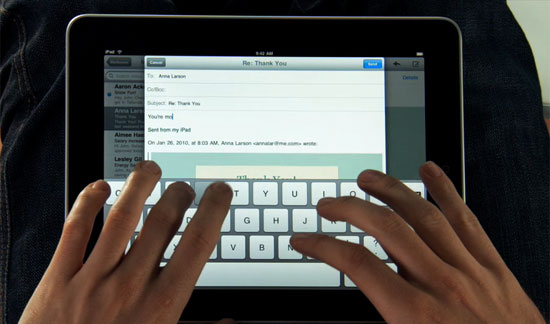
The functionality is also a big unknown. When the iPhone first launched its killer apps were the ones that Apple made for it. While the App Store is far more mature now, the iPad will need some key functionality for it to be a productivity device.
Porting iWork ($9.99 per app) to the iPad was necessary. The fact that Apple did this right off the bat indicates that at least someone over there knows that the market for a $500 - $900 toy is slim. But we need more. We need things like Photoshop for the iPad. Dare I say that we even need a port of Microsoft Office?
At CES everyone talked about tablets and eReaders being huge at the show. I saw a lot of neat devices, but nothing I’d want to go out and buy. The iPad is the first one I’ve seen with potential. And much like the iPhone before it, whether you like it or not is irrelevant - it will at least pave the way for other companies to emulate and improve upon the design.
The Hardware
Leading up to today’s announcement I desperately tried to figure out what hardware Apple would use for the iPad. I’ve been on a bit of an SoC kick as of late, so you can understand my fascination.
Apple acquired PA Semi back in 2008. Everyone assumed that it’s because Apple wants to start making its own SoCs for the iPhone. Well, the first results of that acquisition are in the iPad.
Apple didn’t devote much time to the SoC in the iPad other than to tell the world that it’s Apple’s own silicon and it runs at 1GHz. The SoC is called the A4. I’ve asked Apple for more details on it, but I’m not holding my breath for a response.

Given the fact that it runs the iPhone OS and nearly all iPhone apps, I’m guessing the A4 is ARMv7 based. It’s possible that Apple engineered its own architecture for the A4, but more likely that it simply took an existing ARM design and modified it to suit its needs.
If Apple wanted to save cost it would’ve gone with a Cortex A8 based processor, or if it wanted more performance it would be something more A9 like. I’m not ruling out a dual-core implementation, but given the entry level cost point I’m assuming that it’s not anything quite as fantastic.
The 1GHz operating frequency implies a 45nm manufacturing process if it’s indeed an A8 or A9-like core. If we look at Apple’s public video, it appears to render a page at Spin.com in roughly 2.7 seconds. My iPhone 3GS does the same in about 7 - 9 seconds, but it also appears to be loading a lot more content on the current Spin.com site. Even if we assume that the 600MHz Cortex A8 in the iPhone 3GS can render the same page in 5 seconds, the speedup is too big to be from a clock speed increase alone.
Based on this data alone (and the responsiveness of the UI from the videos) I’m going to say that there’s a good chance that the A4 is much closer to the A9 in terms of performance. If it’s not an A9 itself, it may be Apple’s own out-of-order design.
Then there’s battery life. Apple is claiming 10 hours of web browsing battery life, which is reasonable given the 25WHr battery, but over a month of standby power. I suspect that the ridiculous standby power is due to the fact that the 3G radio is completely shut off when the device is asleep, but even then that’s very good power consumption. If anything, Apple’s own engineering here was probably spent on making sure that the SoC’s power consumption was as low as possible. By comparison, even the best SoCs in a smartphone today can usually only offer 300 hours of standby power (12.5 days).
Apple’s battery life claims have been unusually reliable as of late, so I would say that we should expect 10 hours of useful battery life out of one of these things.
I’ve spent a lot of time talking about the CPU, but what about the GPU in the A4? Given that Apple is a shareholder in Imagination Technologies (9.5%), I’d say that it’s a pretty safe bet to assume there’s some sort of a PowerVR SGX core in here. Which core? There’s definitely the physical space to include something ridiculous, but I’m guessing it’s something relatively controlled - perhaps an SGX 535 or SGX 540 at the most.
A4 in the next iPhone?
I've been racking my brain over the past several months trying to figure out what Apple will use in the next iPhone. I figured it could be as simple as a 45nm Cortex A8 shrink, or as ridiculously sweet as a pair of Cortex A9s. With the iPad being based on Apple's own A4 SoC design, I'm guessing we'll see it (or a derivative) making an appearance in the 4th generation iPhone.
Resolution and Video Decoding
The iPad uses a 9.7” IPS panel with a 1024 x 768 resolution. The panel technology is great, the resolution is a bit disappointing.
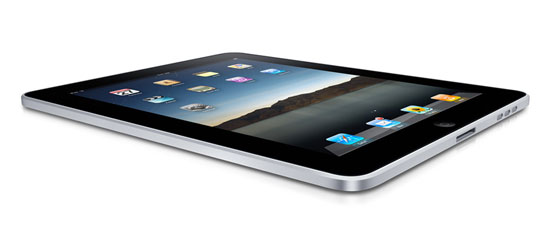
Video decoding is presumably fully hardware accelerated, but there are limitations here. Apple says you can only decode H.264 video up to 720p, 30 frames per second, Main Profile level 3.1 with AAC-LC audio up to 48kHz. The only containers supported are .m4v, .mp4 and .mov.
This is horribly unfortunate and it means that anyone with existing content not in a friendly format will have to convert it before it’ll play on the iPad. While Apple likes to assume the world revolves around it, the truth is it just doesn’t. This is great for folks who already watch movies on their iPhones and not so great for those who don’t. Luckily with a good enough desktop, transcoding movies to your iPad shouldn’t be too painful.
There’s no camera on the device so I’m assuming there’s no video encoding support either. You can get rid of any image processing as well. In order to hit that $499 price point with such an attractive device Apple most likely had to cut corners wherever possible.
Final Words
Apple never entered the netbook market because it believed the devices weren’t very good. I’d tend to agree. You can get better performance and similar size out of a CULV notebook if you’re looking for an actual notebook. The netbook makes sense if you are using it as a 2nd, 3rd or 4th machine - but then who’s to say that you need to stick with the same form factor as a notebook?

This is where the tablet/smartbook device comes in.
Intel’s Atom processor is more than fast enough for the tasks you’d do on a netbook. The issue is that the OS and its applications running on netbooks are optimized for a class of processor that’s many times faster than Atom.
The iPad isn’t revolutionary, it simply takes an OS tailored to the power of the machine and pairs it with hardware that doesn’t look or feel like a netbook. Assuming that browsing the web, sending emails, using apps and watching videos is as fast on the iPad as it is on an Atom based netbook, Apple will have effectively capped the price of netbooks at $499. And to be honest, there’s no reason netbooks should ever approach that price to begin with.
A device that slots in between a smartphone and a notebook shouldn't look too much like either device. It needs to borrow from the strengths of both and bundle them in an attractive package. As a consumption device, the iPad looks promising. The big unknowns for me are: multitasking support, the performance of the A4 and ultimately whether or not you can actually be productive on the iPad. Based on all of that, we'll be able to figure out how much this thing is really worth.
Like the original iPhone (perhaps even moreso), the iPad is an extremely polarizing device. Even among AT staff it's a hit or miss depending on the person, regardless of their Mac buying history. For what it's worth, Mike Andrawes and I are both excited about its potential. Perhaps it's what we've been waiting for these past ten years.
We’ll find out in 60 days.







